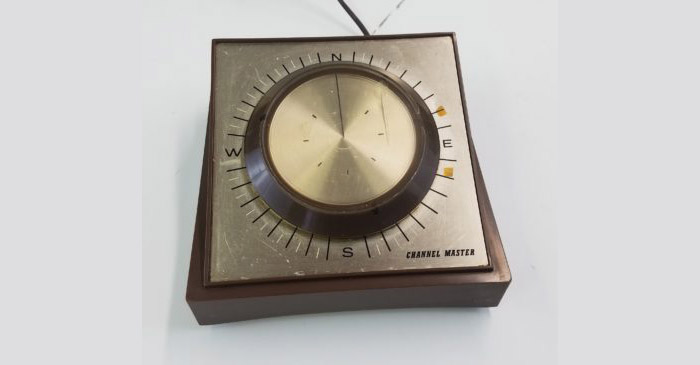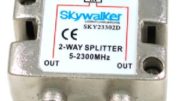The thing you see in the image above is part of a 1970s antenna rotator system. It happens to be the exact part that my family had in the master bedroom. Living as we did somewhere between New York City and Philadelphia, this giant control knob and the rotator on the roof let our antenna get signals from two different cities. This was in the days before cable television, and getting a total of 15 channels, from two different cities, was a pretty big deal. It made us rockstars in our little housing tract. Or so I thought, anyway.
The big days of antenna rotators
Antenna rotators really had their big days in the 1960s and 1970s. Back then, watching live was literally all there was. When everyone was watching live, the only concern you had was everyone watching a station broadcasting from the same place. This meant that a rotator didn’t create much of a problem for most people’s viewing habits. Remember, having more than two TVs in a house was still a pretty big deal, and not everyone could do it.
VCRs came into houses in the mid-1970s if you were wealthy (we were not) and became affordable for most folks in the 1980s. The VCR, and later the DVR, made things a bit more challenging for rotators. Cheap TVs created much the same challenge. When you have people watching different stations broadcasting from different places, a rotator is a challenge. Add to that the idea that you’re recording something at some random time of the day and things get even thornier.
The fall and rise of antennas (and rotators)
Rotators, and over-the-air antennas in general, became far less popular in the period between about 1990 and 2005. Cable television and satellite became widely available, giving people new options they hadn’t had before. During this time, many people stopped using antennas completely.
It wasn’t long before cable TV operators got greedy and started charging way too much for TV. By the mid-2000s, it was common to pay $50 a month for cable TV, which we thought was a lot back then. Something had to be done.
By then, television was going all-digital, with the promise of crystal-clear free HD channels. Generally, over-the-air stations went all-HD about two years before local cable. There was a real drive to go back to antenna life, and this also meant a real drive to put up rotators.
Where we are today with rotators
Solid Signal still sells antenna rotators. Here’s our best-selling one. It’s a lot fancier than the one my family had, with a remote control and the ability to pre-set locations. (Back when I was a kid, we used a magic marker for that.) So if you move into a house with an antenna and a rotator, you don’t have to assume that it’s 50 years old.
The real question is, does it still work? Unfortunately life is pretty hard when you’re a rotator. You’re working against the wind, often with fairly heavy antennas. That’s why these things tend to last only about 5-7 years before the motors wear out. If you can, try to test the rotator to see if it still works. If it does, keep using it! It was put in place for a reason, and that reason may still make sense.
If the rotator doesn’t work, you can choose to replace it with something from Solid Signal. Generally the wire will last longer than the rest of the rotator, so it could just be a matter of changing out the rotator and the control box with something more modern. Or, you can remove the wire, leaving the rotator base in place. It won’t hurt anyone and you don’t need to worry about it.
Get the advice you need from Solid Signal
If you’re not sure where to go with your over-the-air antenna project, give us a call! Our number is 888-233-7563 and we’re here for you during East Coast business hours. When you call, you’ll get an expert who will lay out your options. They’ll even give you their direct line and their e-mail address if you ask, so you can keep the conversation going! If it’s after hours, fill out the form below and we’ll get back to you, usually within one business day.





